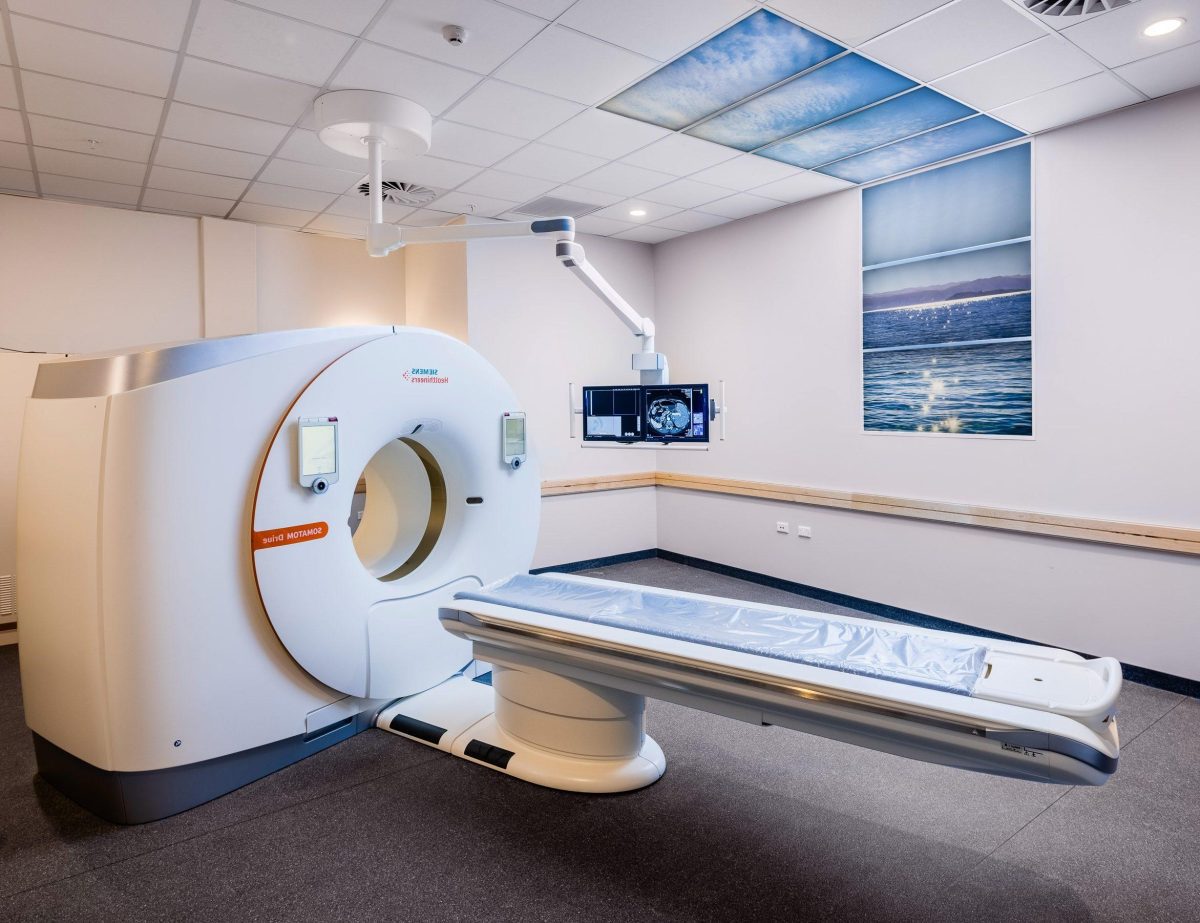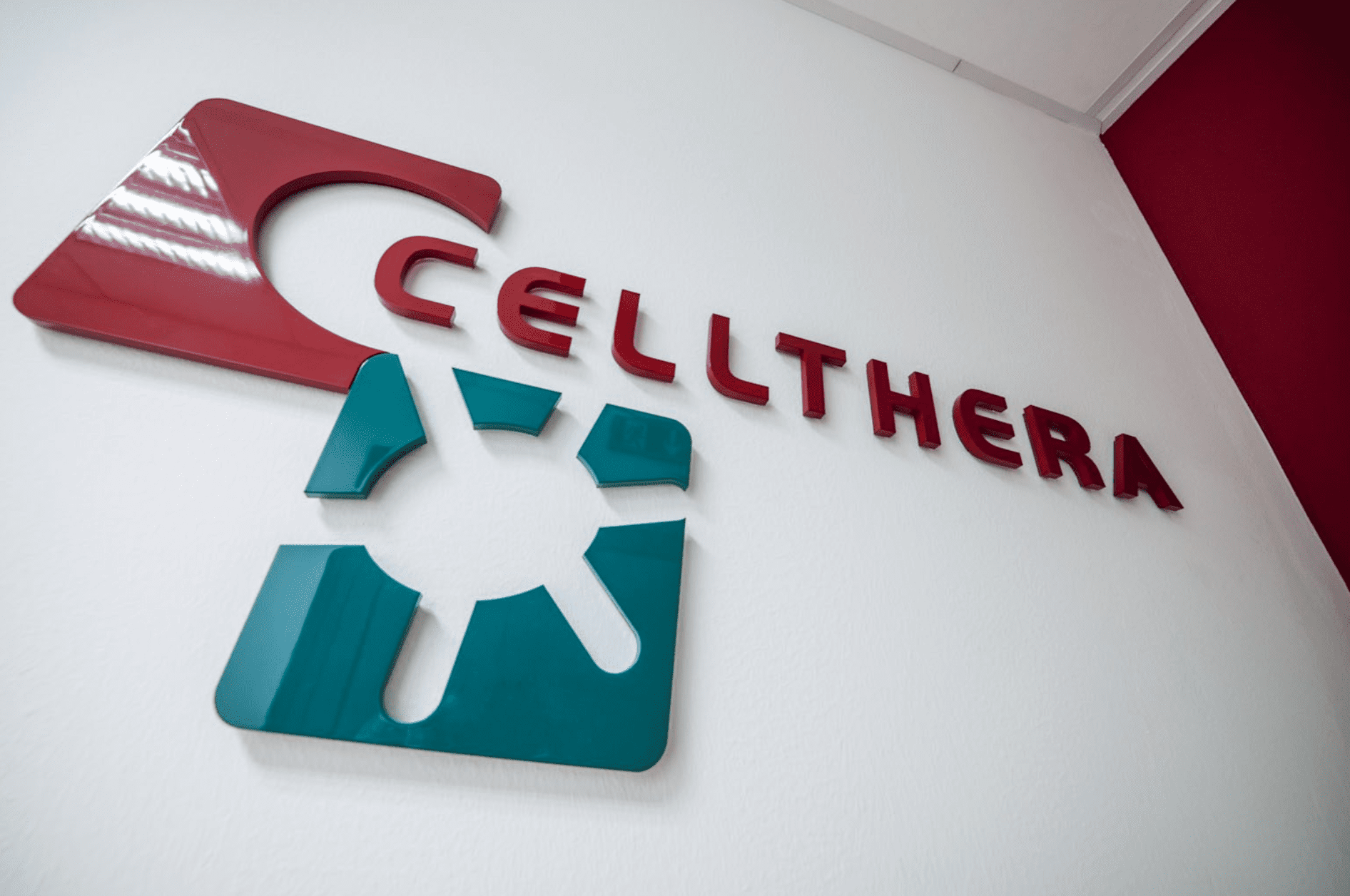Beim PET-Scanning werden bestimmte Mengen an Radiosubstanzen, so genannte Radio-Tracer oder -Arzneimittel, eine spezielle Digitalkamera und ein PC verwendet, um die Funktionen der Organe zu untersuchen. PET erkennt Veränderungen im zellulären Bereich, was dazu beiträgt, die Krankheit bereits im Anfangsstadium zu erkennen – viel früher als es mit anderen Methoden möglich ist.
PET-CT-Verfahren
PET-CT – komplexe Technik, die PET und CT kombiniert. Mit dieser Technik können Sie detaillierte Daten über die Entwicklung bösartiger Neoplasmen erhalten.
- Bei der CT werden mehrere Röntgenaufnahmen des Körpers gemacht, die das System dann zu einem 3D-Modell zusammensetzt.
- Bei der PET wird ein Medikament mit geringer Radioaktivität verwendet, um die Zellen zu identifizieren, die ein abnormales Verhalten zeigen.
Die PET-CT-Untersuchung wird größtenteils ambulant in der radiologischen Abteilung durchgeführt. Die Radiologen arbeiten mit speziellen Scannern – in der Regel dauert der Vorgang eine halbe Stunde bis 60 Minuten.
Positronen-Emissions-Tomographie und Computertomographie
Diese Methoden kommen in den folgenden Fällen zum Einsatz.
- Erkennung des Vorhandenseins von kanzerogenen Formationen und Bestimmung der betroffenen Zone.
- Erzielung genauer diagnostischer Ergebnisse.
- Bewertung der Wirksamkeit der gewählten Therapie.
- Bestimmung der Rückfallwahrscheinlichkeit.
- Bewertung der Stoffwechselvorgänge und der Lebensfähigkeit der Körpersysteme.
- Feststellung, wie sich der Herzinfarkt des Patienten auf Bereiche des Herzmuskels ausgewirkt hat.
- Identifizierung von Bereichen des Herzens, die für eine Angioplastie in Frage kommen oder an denen koronare Bypass-Operationen durchgeführt werden können.
- Erkennung von Anomalien im Großhirn.
- Erstellung einer Karte der operativen Fähigkeiten von Herz und Großhirn.
Was können Experten mit PET-CT und PET sehen?
- Bewertung der für den Organismus lebenswichtigen Optionen: Blutfluss, Zuckerindikatoren und Häufigkeit des Sauerstoffverbrauchs.
- Feststellung, welche Systeme nicht richtig funktionieren.
- Erkennung von Krebszellen, um die Metastasierung zu verhindern.
- Bewertung der Wirksamkeit des Therapieprogramms – falls erforderlich, wird die Therapie angepasst.
- Erkennung krebserzeugender Pathologien.
- Bewertung der Größe des Tumors und des Ausbreitungsgebiets.
Gewinnung von Daten, die aufgrund der möglichen Zeichnung auf die Notwendigkeit chirurgischer - Eingriffe schließen lassen.
- Wahl der Behandlungsmethode.
- Bewertung des Risikos eines Wiederauftretens.
- Planung der Strahlentherapie.
Mit Hilfe der PET-CT lässt sich die Wirksamkeit von Therapien zur Bekämpfung von Karzinomen aufzeigen. Die Technologie zeigt Bereiche auf, in denen noch krebserregende Zellen vorhanden sind.
CT vs. PET-Scan
Die CT arbeitet mit Röntgenstrahlen, die MRT mit Radio- und Magnetwellen. Beide Techniken ermöglichen es Spezialisten, ein ganzheitliches Standbild der Körperstrukturen zu erstellen. PET verwendet eine aktive Radiosubstanz, um die Funktionsfähigkeit von Organen und das Verhalten von Zellen in Echtzeit zu zeigen. Der Unterschied zwischen PET und CT-Scan besteht darin, dass pathologische Veränderungen im Organismus früher erkannt werden können.
Die operative Funktion von PET hat den unten beschriebenen Wirkmechanismus:
Vor der PET-CT-Untersuchung wird eine kleine Menge eines Radiozuckers injiziert, der als Fluordesoxyglukose-18 bezeichnet wird. Der häufigste Radiotracer ist F-18-Fluordesoxyglukose (FDG) – ein mit Glukose vergleichbares Molekül. Diese Substanz wird gelegentlich auch als FDG-18, Radio-Glukose oder Tracer bezeichnet. Krebserregende Zellen sind besonders stoffwechselaktiv und können auch mehr Glukose aufnehmen. Die aktivere Reaktion ist auf den PET-Ergebnissen zu sehen. Es gibt Ihren Fachärzten die Möglichkeit, eine Erkrankung früher zu entdecken, als sie mit anderen bildgebenden Tests festgestellt werden kann.
Vorbereitungen für PET-CT
Was die Vorbereitung auf die PET-CT-Untersuchung betrifft, so sollten Sie 6 Stunden vor der Untersuchung keine Mahlzeiten mehr zu sich nehmen. Es ist erlaubt, Wasser zu trinken. Manchmal empfehlen Ärzte auch den Verzicht auf körperliche Übungen.
Für Diabetiker, die nicht auf Nahrung verzichten können, ist es notwendig, dass sie ihre Ernährung anpassen – die nahrungsfreien Stunden fallen in eine bestimmte Zeit davor. Fachärzte müssen die Patienten beraten.
Durchführung der Methodik
Sie lautet wie folgt:
- Die Patienten legen sich auf den Tisch. Falls erforderlich, wird ein Katheter in die Vene des Patienten eingeführt – am Unterarm oder Arm.
- Die Radiosubstanz – FDG-18 – wird injiziert.
- In der Regel dauert die Verabreichung des Medikaments 60 Minuten, bis sich seine Eigenschaften offenbaren. Die Patienten ruhen sich aus und schweigen.
- Manchmal wird ein wenig Kontrastmittel in den Darm gespritzt, um den Radiologen die Möglichkeit zu geben, die Ergebnisse der Diagnose besser zu interpretieren.
- Die Person wird dann in ein PET-CT-Gerät gebracht.
Die Bearbeitungszeit beträgt in der Regel nicht mehr als 60 Minuten.
Gefühle der Patienten
Meistens ist dieser Vorgang schmerzfrei, mit Ausnahme der intravenösen Injektion. Manchmal berichten die Patienten über leichtes Unbehagen.
Vorteile und Nachteile
Beginnen Sie mit positiven Aspekten.
- Mit PET-CT-Scans können Spezialisten einzigartige Daten über die Anatomie des Patienten und die Funktionen der Organsysteme gewinnen.
- Nuklearmethoden liefern Medizinern die detailliertesten Daten zur Diagnose oder Therapie verschiedener gutartiger und bösartiger Erkrankungen.
- Im Vergleich zur explorativen Chirurgie ist die Methode billiger und sehr genau.
- Bestimmung abnormaler Veränderungen auf zellulärer Ebene – Pathologie wird in einem sehr frühen Stadium definierbar.
- Hohe Detailgenauigkeit.
- Geringe Fehlerwahrscheinlichkeit.
Sehen wir uns nun einige der Risiken an.
- Eine kleine strahlende Substanz beeinflusst den Organismus – das Radiomittel wird während der Durchführung des Prozesses eingeführt.
- Allergische Reaktionen sind möglich, sie äußern sich jedoch nur leicht.
- Kontraindikationen für die Anwendung dieses Verfahrens: Schwangerschaft und Stillzeit.
- Nach der Behandlung können leichte Rötungen und Juckreiz auf der Haut auftreten.










